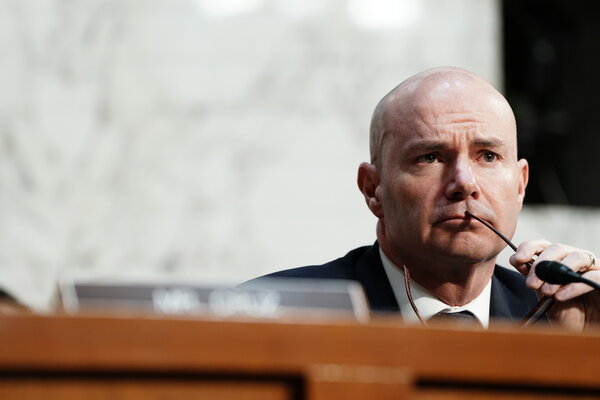During Donald Trump’s presidency, many of his appointees left an indelible mark not just on policy, but on the literal foundations of government institutions. One of the lesser-known yet telling instances of this influence was the push by several Trump-appointed officials for the inclusion of marble in a Federal Reserve renovation project—a move that critics argue reflected an obsession with aesthetics, grandeur, and symbolic power rather than practicality or fiscal responsibility.
The renovation in question was part of a broader modernization effort aimed at updating the Federal Reserve’s headquarters in Washington, D.C. The iconic Marriner S. Eccles building, located on Constitution Avenue, has long been an emblem of American economic stewardship. With parts of the structure dating back to the 1930s, the need for renovations was clear—aging infrastructure, outdated security systems, and environmental inefficiencies had piled up. However, the Trump-era discussion surrounding the renovation veered sharply from functionality toward appearance, particularly with demands for marble finishes, columns, and traditionalist flourishes.
Sources close to the project reported that several Trump-appointed officials—including individuals within the General Services Administration (GSA) and the Federal Reserve Board—advocated strongly for the use of natural stone and classical design elements. According to internal documents and interviews with involved architects and planners, these officials pressed for more “monumental” and “patriotic” visual cues, framing their arguments as a return to “American greatness” in architecture.
Their push echoed broader Trump-era efforts to influence federal architecture. One of the more controversial manifestations of this was the draft executive order titled “Making Federal Buildings Beautiful Again,” which proposed a requirement that new federal construction follow classical architectural styles. Though never fully enacted, this document reflected a cultural and ideological stance that preferred neoclassical grandeur over modernist or utilitarian designs. In this context, the desire for marble in the Federal Reserve’s renovation project was consistent with the administration’s aesthetics agenda.
The push for marble faced resistance from career staff, project managers, and several architects who were more concerned with cost-efficiency and functionality. Marble is significantly more expensive than other materials commonly used in interior finishes, and its installation can prolong project timelines. Detractors also raised concerns about whether these design choices served any purpose other than symbolism. The idea of injecting costly aesthetic preferences into a public renovation project during a time of economic uncertainty—especially at a monetary institution—struck many as ironic.
Furthermore, some observers saw the move as an attempt to subtly politicize the Federal Reserve, which is traditionally viewed as an independent body free from partisan influence. While the Fed’s core mission of regulating monetary policy remained untouched, symbolic efforts to shape its appearance raised eyebrows. The inclusion of marble and neoclassical stylings, in this view, represented more than just a design preference—it was seen as an attempt to align the institution with the ideological legacy of the Trump administration.
Despite the push, the final renovation plans were only partially influenced by these aesthetic demands. Planners reached a compromise, incorporating certain traditional design elements without significantly inflating costs. Marble was used sparingly, limited to certain areas such as the main lobby and entry points, rather than being applied extensively throughout the structure. Modern features such as energy-efficient systems, secure access technologies, and sustainable materials remained intact in the broader scope of the project.
This incident is part of a larger conversation about the role of design in government and how architecture reflects values. For Trump appointees, marble represented strength, permanence, and a nostalgic return to a bygone era of American architectural dominance. For critics, it was a frivolous vanity project that wasted taxpayer money and ignored modern design principles. The tension between these viewpoints underscores deeper divisions in American political culture—between tradition and progress, symbolism and substance, aesthetics and efficiency.
In hindsight, the marble debate can be seen as a microcosm of the Trump administration’s broader governing style. It emphasized spectacle and symbolism, often challenging long-standing norms and institutions in pursuit of a bold visual statement. Whether in policy or in buildings, the administration’s imprint was often about asserting control, projecting power, and resisting what it saw as the bureaucratic grayness of the Washington establishment.
Moreover, this episode highlights how even the smallest details in government projects can become battlegrounds for ideological expression. While the public may never notice the type of stone in the Federal Reserve’s hallways, the decision-making process behind such choices speaks volumes about the values and priorities of those in charge.
Ultimately, the renovation project continued with a blend of old and new—partly shaped by Trump’s appointees, but also tempered by institutional safeguards and practical realities. The Federal Reserve building will emerge from its facelift not as a marble palace, but as a compromise between competing visions of what America’s most important economic institution should look like.
As administrations change and new priorities take shape, it remains to be seen how long-lasting the influence of Trump-era architectural preferences will be. What is certain, however, is that the debate over marble in the Federal Reserve’s halls was more than a question of stone—it was a reflection of power, identity, and the ever-evolving face of American governance.



